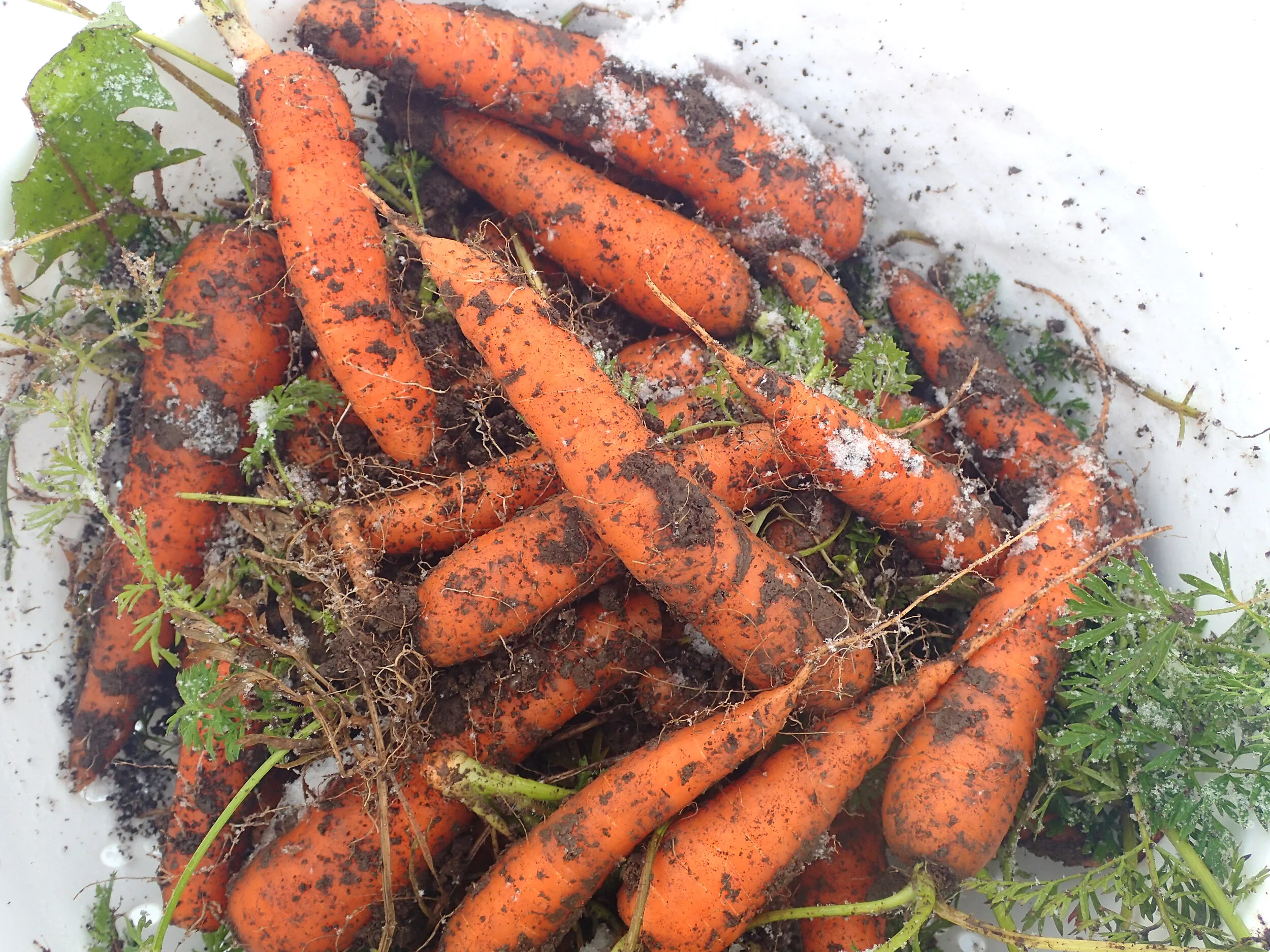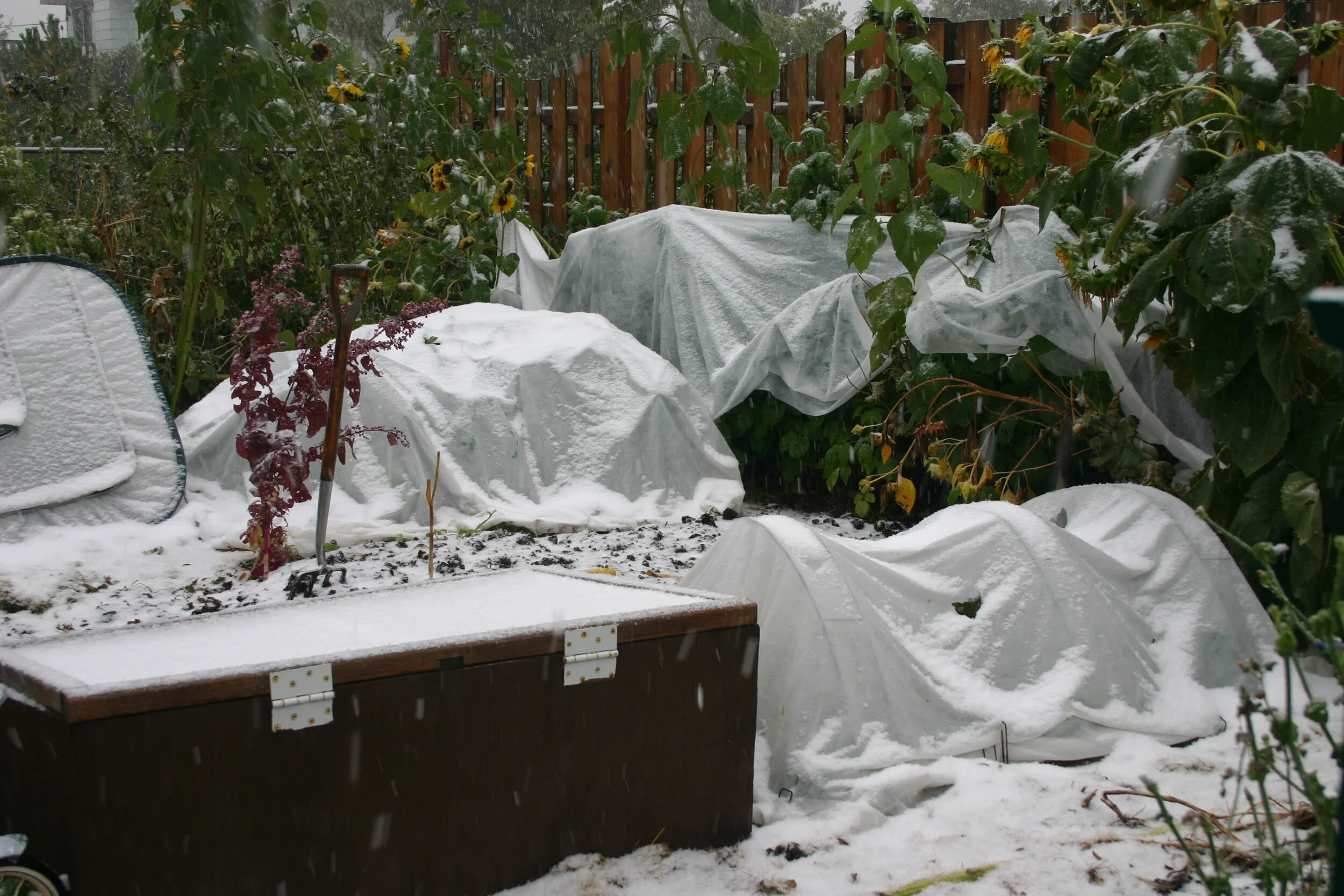Montana Gardening
Extending the Growing Season Can Be Done!
Written and Photographed by Amy Grisak
“Varieties that thrive in cool temperatures and warm soil are lettuce, spinach, and other greens. Seeded crops such as radishes, spinach and other greens, Swiss chard, carrots, beets, and sugar snap peas are also excellent choices. ”
By the time July rolls around, most gardeners are about done keeping up with the weeds, watering, and bringing in the harvest. But if you really want to get the most from your garden, this is truly the perfect time to plant again. Often referred to as the “lazy gardener’s” time, planting for fall harvests is a way to make the most of our short growing season.
The beauty of planting a fall garden is that you can plant a second crop of your favorite spring vegetables with barely any pest pressure, since it’s out of sync with their lifecycles, along with not needing to weed or water nearly as much.
Varieties that thrive in cool temperatures and warm soil are lettuce, spinach, and other greens. Brassicas such as cabbage, broccoli, and cauliflower that tend to turn bitter in the summer heat also do well in the fall. Seeded crops such as radishes, spinach and other greens, Swiss chard, carrots, beets, and sugar snap peas are also excellent choices. Kale will actually survive snow. Avoid heat loving plants such as tomatoes and peppers.
The greatest challenge in fall gardening is losing daylight. As the days shorten, so does the growing potential. The key to fall planting is penciling out the days to maturity, adding on a couple of weeks to make up for the lack of sunlight, then counting backward. Look for varieties that are going to be nearly fully grown before significant sunlight loss toward the first part of October.
On the practical front, this is how it works: After pulling spring crops, such as sugar snap peas, lettuce, or the first crop of green beans in the middle to the end of July, there is roughly two months, or 60 days, until the first frost. Plan to plant seeds that require 50 to 60 days to maturity. The first vegetables to plant are the ones that take the longest. For example, If I'm seeding something, this will mean I can grow a larger carrot variety, such as Autumn King, beets, or Swiss chard. Amazingly, both of the root vegetables can remain in the ground, until you are ready to dig them - even in the snow - and the Swiss chard is remarkably hardy. It's not uncommon to brush off snow and continue harvesting for weeks.
The weather is unpredictable in this region, with periodic snowfall as early as August. But because the ground is warmed from the summer heat, even a cold snap or a dusting of snow isn't going to hurt these crops as long as they are properly covered.
Direct seeding works especially well with vegetables that don't require as long to mature. As the summer wanes, try planting lettuce, spinach, and radishes that are ready to eat within a month or so. This allows you to have fresh salads well into the fall. With a little protection spinach often continues to thrive until at least Thanksgiving.
For some gardeners, fall is the perfect time to grow cabbage, cauliflower, and broccoli because they are not battling bugs.
A second planting of cabbage or broccoli can be a challenge because they require a growing season that is typically at least 85 days from when they are first seeded. But it can be done if you start the seeds in pots by the middle of June through the first part of July. Once you remove summer crops, replace them with the transplants, and watch them grow without worrying about any tiny white moths flitting around them.
The weather is unpredictable in this region, with periodic snowfall as early as August. But because the ground is warmed from the summer heat, even a cold snap or a dusting of snow isn't going to hurt these crops as long as they are properly covered.
Most gardeners grab a blanket to toss over the tomato plants for an emergency fix. For gardening during the autumn, be more proactive to prevent damage and allow the plants to continue to grow.
Planning for a late garden requires a shift in your thinking, but after you enjoy not battling bugs or weeds, and you harvest fresh vegetables for holiday meals, you won’t want to miss planting for the fall season.





